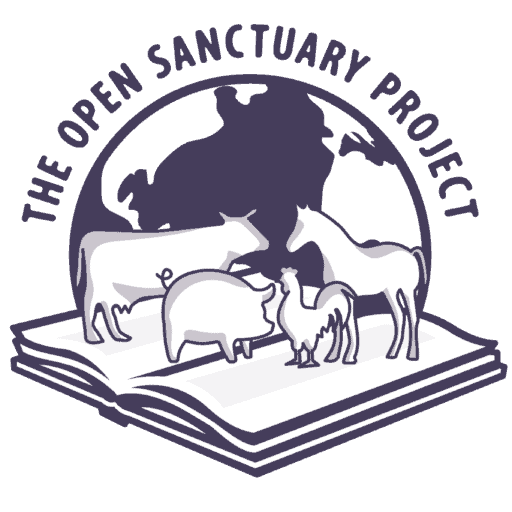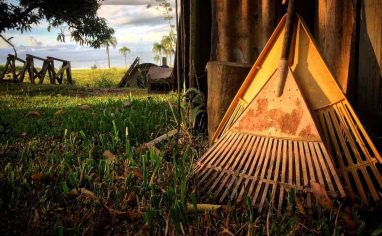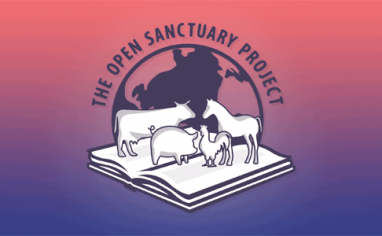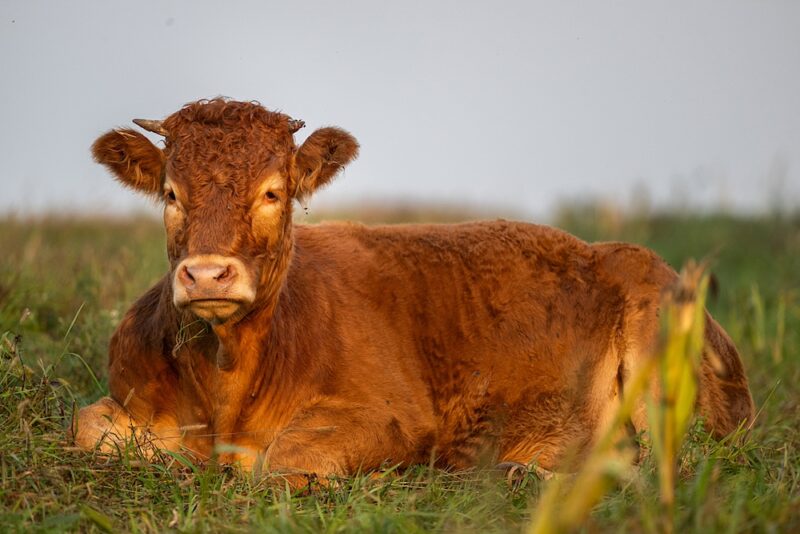
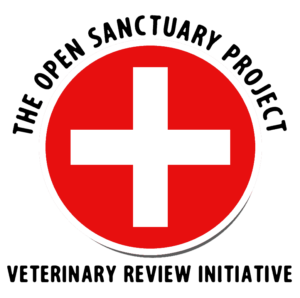
Veterinary Review Initiative
This resource has been reviewed for accuracy and clarity by a qualified Doctor of Veterinary Medicine with farmed animal sanctuaryAn animal sanctuary that primarily cares for rescued animals that were farmed by humans. experience as of March 2025.
Check out more information on our Veterinary Review Initiative here!
This Resource Is Not A Substitute For Veterinary Advice Or Hands-On Training
Please note that this resource will not get into all of the mechanics of how to reposition or lift a cow who is unable to stand because doing so without proper training could have dire consequences for both the cow resident and the humans involved. Working around a downed cow can be incredibly dangerous if you do not know where to position yourself or how to properly help them – there is simply no substitute for hands-on training and veterinary guidance. The purpose of this resource is to help caregivers understand why a cow might be unable to stand and what they should do in advance to make sure they are as prepared as possible to assist them. Even once you have experience working with downed cows, you should always consult with your veterinarian when one of your cow residents is unable to get up. They can make specific recommendations regarding both diagnostics to determine the underlying cause and interventions to help get them up.
It is always concerning if a sanctuary resident is unable to rise from lying down on their own (and you should contact your veterinarian in such cases), but because of their large size, being unable to rise is particularly dire for cows. To further complicate things, assisting them can be challenging and dangerous for both the resident and the humans involved. Proper training and equipment are needed to safely and compassionately lift or move a cow, and therefore cow caregivers must work with their veterinarian to make sure they have everything they need in advance. When a cow is down, time is of the essence, so having a plan in place is key.
A Note On Language
In this resource, when we talk about a cow being “down” or a “downed cow”, we are referring to individuals who are unable to get up on their own. Other sources may refer to these individuals as “down cows” or “downer cows.” You may also come across the term “downer cow syndrome” to describe a cow’s inability to stand or more specific terms depending on the position the cow is in and how long they have been down.
Understanding How Cows Get Up
Before talking more about cows who are unable to rise on their own, it’s important to understand the normal mechanics of how they get up. Cows who are lying down rise by starting in a sternal position, as shown in the illustration below.
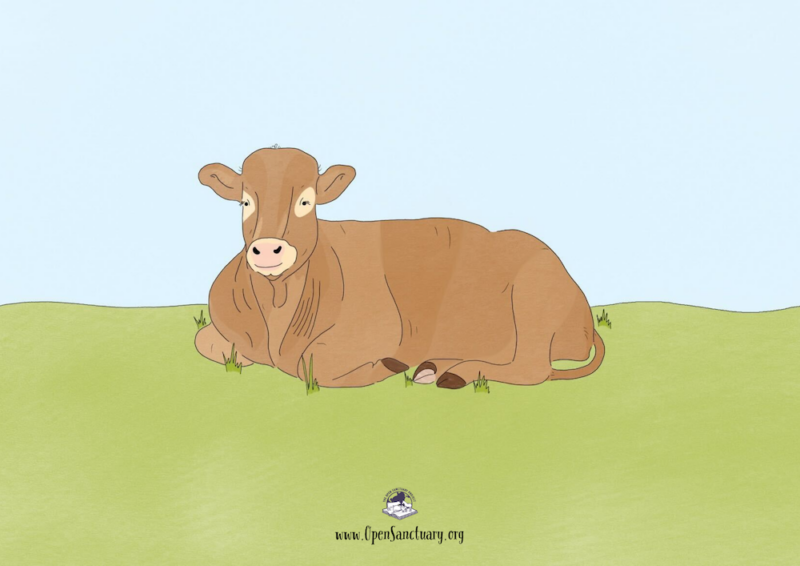
When in a sternal position, they will be upright with their chest mostly against the ground, though they will be slightly tilted to one side or the other. This will be more obvious on their back end than their front end. The cow may have both back legs tucked close to their abdomen with their feet pointed toward their head (as shown in the illustration above), or they may position themselves so their bottom leg is tucked while the other leg is extended away from them (i.e., if they are lying on their right side, their back right leg may be tucked under their belly or very close to their belly, while the back left leg is extended out at a slight angle). When relaxing, they may extend one of their front legs, but before getting up, they will typically bend both front legs and position them under their chest like the cow above.
From this position, the cow will then rock forward onto their front knees and push up on their hind legs to lift their hips, as shown in the illustration below. When getting up, the cow’s back leg on the side on which they were lying will be doing most of the work/bearing most of the weight in the back end.
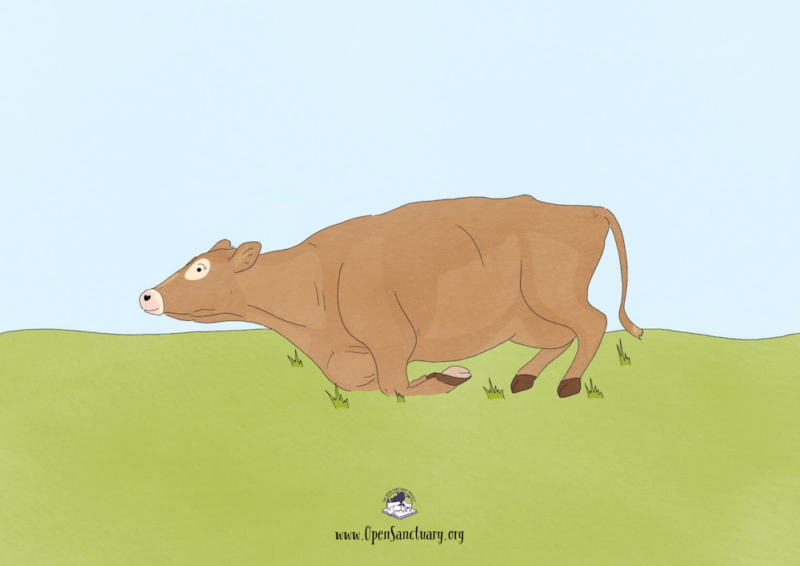
Once they are up on their back legs, they will stand up on their front legs one at a time, as shown below.
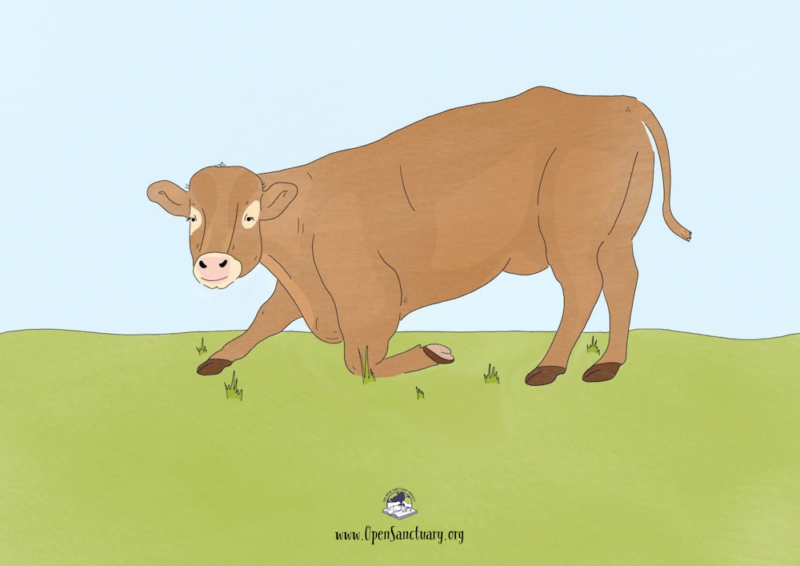

What Could Cause A Cow To Be Unable To Rise?
With this understanding in mind, let’s consider two main factors that can contribute to a cow being unable to rise: physical/health issues and/or their surroundings/position in the environment.
Physical/Health Issues
Weakness, injury, and pain could make it difficult (or impossible) for a cow to get up on their own. This may be the result of an acute or chronic issue. Depending on the issue(s) and what part of their body is affected, you may find that some individuals can rise easily when they are lying on one side but not the other. Remember, the back leg they are lying on has to do most of the work, so if this leg is painful or weak, they may not be able to get up when lying on that side. It’s important to note that it’s not just mobility issues or physical injuries that could interfere with a cow’s ability to get up. A cow could also be too weak to stand due to a nutritional deficiency, infectious disease, or diseases that affect the central nervous system.
Assisting a cow who is unable to stand due to physical/health issues can be complicated depending on the issue(s) at hand. In some cases, the underlying issue will need to be addressed by your veterinarian before attempting to help them up. Your veterinarian will always be your best source for guidance.
Their Surroundings/Position In The Environment
Sometimes the primary reason a cow is unable to rise is related to their surroundings. For example, as mentioned above, cows will rock forward onto their knees before standing. This sends most of their weight forward, making it easier for them to push up on their back legs. To do this, they must have ample room in front of them to extend their neck and rock their body forward (as shown in the second illustration above). Without enough space, they may be unable to shift their weight forward, leaving too much weight for their back legs to deal with. The mechanics of a cow lying down are essentially the same as getting up, but in reverse order, so typically if they have enough room to lie down, they will also have enough room to get up. However, if they get knocked over or fall or if something ends up in front of them, they could find themselves positioned in such a way that they do not have the room they need.
If they are lying down on terrain that is sloped or uneven, this can also interfere with the normal mechanics of getting up. Depending on the angle and direction of the slope and how they are positioned on it, a cow may not be able to bring themselves into sternal recumbencyRecumbency is the state of leaning, resting, or reclining. and may instead be stuck in lateral recumbency (i.e., they are “stuck on their side” which is often referred to as “cast”). As ruminants, this is an extremely dangerous position for a cow to be in, which we’ll talk more about below. Even if they can get into a sternal position, lying on sloped terrain could make it difficult for a cow to stand if it interferes with their ability to rock forward. Similarly, they could have trouble getting up if they are lying on sloped ground that causes their back to be lower than their rear feet (which will make it difficult for them to push up on their back legs to lift their hips).
Their physical surroundings can also prevent them from getting up if the terrain they are on does not provide enough traction for them to get up on their back legs (for example if the ground is muddy or icy). As a side note, icy terrain, slick mud, and deep mud are all very dangerous for cows and should be avoided. You can read more about this topic here.
If they are unable to get up due to their surroundings, carefully moving/repositioning them may be all that is needed for them to get up on their own. We’ll discuss this a bit more below. In the case of terrain that does not provide enough traction, taking steps to increase traction (for example with sand, animal-safe ice melt, bedding, etc.) may be necessary.
A Combination Of Factors
Sometimes a cow is unable to rise because of a combination of factors, which can make assisting them more complex. For example, an individual who is having difficulty getting up due to a health issue (perhaps due to osteoarthritis) may spin around as they try to rock forward and get their back legs under them. As a result, they could find themselves positioned so that they no longer have the room they need to rock forward. Now, in addition to needing help rising, they also need to be repositioned. In other cases, the primary issue may be related to their surroundings (perhaps deep mud that is making it difficult to push up on their back legs), but through repeated attempts to get up, they end up injuring or exhausting themselves. As a result, even once out of the mud, they may not be able to get up depending on the severity of the injury or level of exhaustion.
Signs A Cow Is Down
While some residents who are unable to rise may be easy to spot (particularly if they are actively struggling or are stuck in lateral recumbency), others may not be so obvious. To avoid anyone being stuck down for long periods of time or injuring themselves through repeated attempts to stand, it’s important to recognize the more subtle signs someone may be struggling to get up on their own. This includes the presence of a large pile of poop behind them, a dirty face (which could be a sign they have been using their head to try to help them get up), or evidence on the ground that they have been dragging themselves or spinning in a circle (outdoors, you might see marks in the grass, dirt, or snow, and indoors, you may see that the bedding around them has been disturbed). Also, pay attention to their behavior. For example, if a resident who typically gets up and moves away from you when you approach remains down as you come close to them, this would be cause for concern and warrants a closer look. Another red flag would be if a resident is lying down all alone away from the rest of the herd. In these cases, you’ll want to look for other signs they are unable to rise. Depending on the specific situation, you may decide to keep a close eye on them or to encourage them to get up so you can determine if there is a problem or not.
Risks Associated With Being Down
In addition to any underlying condition that may have caused the cow to be unable to rise, they are also at risk of secondary issues. These include but are not limited to:
- Injuring themselves while attempting to stand
- Free-gas bloat
- Respiratory issues
- Muscle and nerve damage
- Pressure sores
Some of these issues can prove fatal (for example, bloat and respiratory issues), and others can become irreversible (muscle and nerve damage) if the individual remains down for too long, ultimately resulting in the need for euthanasia. To give the individual the best chance of recovery, you should contact your veterinarian immediately when a cow resident is down. The longer they remain down, the poorer the prognosis.
Making Sure You Are Prepared To Help A Downed Cow Resident
Ideally, you should have a conversation with your veterinarian about how to respond to a cow who is unable to stand well before you are in a situation where you need to assist a resident. Time is of the essence and proper training is necessary to safely offer assistance. Attempting to assist a downed cow without proper training and equipment could have devastating consequences for the resident and the humans involved. By having conversations with your veterinarian or other care experts in advance, you will be able to procure the recommended supplies and familiarize yourself with how they are used. Preparing in advance also gives you time to connect with other folks in the area who may be able to assist you during an urgent situation.
Research Options In Your Area
Depending on where you are located and the makeup of your team (if you have a team), it may be easier and safer to call in professionals rather than attempt to assist a downed cow on your own. If you have concerns about your ability to assist a resident who is unable to stand, be sure to search for organizations in your area that are trained in Technical Large Animal Emergency Rescue and reach out to them in advance to see if they would be able to offer assistance if one of your residents required it. Even if you learn how to assist downed cows yourself, it can still be worthwhile to reach out to these folks. You never know when a situation may come up that you are unable to deal with. Identifying in advance who you can call for assistance can save you precious time in an emergency!
We also recommend reaching out to veterinary hospitals in your area to see what services they can provide to downed cows and to discuss whether or not there are any limitations to what they can provide based on an individual’s size. For example, a cow who is unable to stand may benefit from time in a float tank (a water-filled chamber that floats the cow into a standing position), but depending on the size of the float tank, your largest residents may not fit. We’ve heard stories of large male Holstein residents being too large to fit in some float tanks. Given all that is involved in transporting a downed cow to the hospital, it’s important to have an idea in advance of what they will or will not be able to provide in terms of care, as this can help inform how you and your veterinarian proceed. (As a side note, mobile float tanks are available, so you should also ask your veterinarian if they know of any in your area.)
Learn Different Ways To Assist
We always recommend consulting with your veterinarian when a cow resident is down. The specifics of the situation will dictate how to best proceed, and they will be able to guide you through this process (they can also come out to evaluate the individual). To make sure you are prepared to follow their instructions, it’s important to familiarize yourself (and your team) with the most common ways you may be called upon to assist. Remember, not all will be appropriate in every situation, so you’ll want to consult with your veterinarian or another expert to determine the most appropriate action plan for the specific situation. Because hands-on training is key, we are not going to get into specifics of how to perform these skills. We encourage folks to work closely with their veterinarian or a cow care expert for proper training.
Human Safety
Working around a downed cow can be quite dangerous. Individuals who are in lateral recumbency may thrash their head as they attempt to sit up or as you assist them, and individuals may spin, flail, or fall as they attempt to stand on their own. It is imperative that everyone working around the individual have proper training so they know how to keep themselves safe. If this is not possible for some reason, an experienced team member must take responsibility for ensuring less experienced folks are watched closely and kept from putting themselves in a dangerous situation.
Assisting A Cow Into A Sternal Position
It’s always concerning if a cow is stuck down, but the situation is even more critical if they are stuck in lateral recumbency because these individuals are at risk of developing free-gas bloat on top of any other issue that may be at play. These individuals must be carefully pushed into a sternal position. For some individuals, getting into a sternal position is all they need to be able to rise on their own (though they may need a bit of rest before doing so). For others, you may find that even when pushed into a sternal position, they are unable to remain sternal on their own. In this case, you will need to prop them up using heavy straw or hay bales (or something similar that will keep them in place but will not cause injury). These individuals should also be closely monitored to ensure they do not fall back into lateral recumbency.
“Rolling” A Cow
In some situations, you may be instructed to roll the individual so that they are lying on their opposite side. Sometimes rolling them to their other side is all that is needed to encourage them to stand on their own. Other times, regularly rolling a cow is necessary to prevent secondary issues such as pressure sores or nerve damage in individuals who remain down for extended periods of time. For example, if your veterinarian has assessed the individual and administered medications that take time to kick in, or if your veterinarian is waiting on certain diagnostic test results, they may recommend rolling the resident to their opposite side at regular intervals during this waiting period.
Assisting A Cow Into A Standing Position
If a cow cannot rise on their own, you may need to assist them into a standing position. Given their large size, this requires specialized equipment and proper training. Not all lifting devices are created equal, so be sure to talk to your veterinarian about which are most appropriate to have on hand and then make sure you learn to use them properly. As you can imagine, lifting a cow can be quite precarious, and doing so incorrectly can have devastating consequences for the resident or the humans involved. The importance of proper training cannot be overstated.
Moving Cows Who Cannot Rise
In some cases, you may need to move a cow who cannot rise. This may be because you have tried to get them into a standing position and found they could not stand on their own or because you do not have the equipment necessary to help them stand. Depending on the situation, you may find you need to move them into a pen to closely monitor them and keep them out of the elements, or you may need to move them into a trailer to get them to the hospital. Talk to your veterinarian about the best way to do this to ensure both resident safety and the safety of the humans involved.
Procure The Necessary Equipment And Supplies
After talking with your veterinarian about the techniques described above, you’ll want to get their recommendations for supplies and equipment you should keep on hand. Be sure to store these supplies in an area where they will be easily accessible in an emergency. Examples of supplies and equipment that can come in handy when assisting a cow who is down include:
- Halters and lead ropes to help restrain their head or help reposition them
- Thick ropes and straps to help roll a cow or to be used in conjunction with other equipment
- Rescue glide to safely move a cow who is unable to stand
- Hip or pelvic lift to get their back end into a standing position
- Lifting harness
Other Equipment
To use lifting devices, you’ll need equipment such as a front loader tractor that the device can be attached to. Not all tractors can accommodate the weight of a full-grown cow, so be sure to check if yours can. The tractor arms then do the work of lifting the individual until their feet are underneath them (lifts should not be used to lift cows off the ground – the goal is just to lift their body and support their weight so they can get their legs underneath them). To use a rescue glide to move a cow onto a trailer, you must have a trailer with a ramp (we recommend ramps for numerous other reasons as well). It can also be helpful to install a winch in the trailer that can help pull the cow and glide up the ramp and into the trailer.
Medications And Other Treatments
Depending on the suspected cause of the individual being down, your veterinarian may recommend administering certain treatments even before they have assessed the resident. Have a conversation with them ahead of time to see if there are certain medications or other treatments they recommend keeping on hand to be used under their guidance.
Make Sure Your Physical Infrastructure Doesn’t Hinder The Process
Knowing how to help a downed cow and having the necessary equipment doesn’t do you much good if your physical infrastructure prevents you from doing what you need to do. Be sure to consider if (and how easily) you would be able to bring necessary equipment into all areas of your cow residents’ living spaceThe indoor or outdoor area where an animal resident lives, eats, and rests.. For example, if someone went down in one of the pastures, would you be able to bring a tractor or truck and trailer to them? Be sure to consider not only the terrain, but also gates. If gates are too narrow to accommodate large equipment, you could find yourself in a situation where fencing needs to be removed in order to get to the individual, which will not only take time, but also incur costs to replace the fencing.
Similarly, be sure to think about how you would be able to assist if a resident went down in their indoor living space. Are the entrances large enough for large equipment to enter? Is the structure large enough to move equipment around the individual? In addition to floor space, it’s important to also consider vertical space. You need a significant amount of vertical space to assist a cow into a standing position – when using a tractor, you’ll need to have adequate clearance to raise the loader arms high enough to lift the individual. When designing housing for your cow resident, it’s best to opt for a structure with a high ceiling. Additionally, we recommend avoiding lofts when possible because a loft may prevent equipment from being able to safely lift and maneuver a resident in need of assistance. If a cow resident goes down in a structure that does not allow for equipment to safely move or lift them, you may need to carefully move them out of the structure before being able to assist them, which can make the process more difficult, stressful, and time consuming than it needs to be.
Create An Area To Care For Downed Cows
As mentioned above, in some cases, a cow resident may need to be cared for while they remain down. While this is not a long-term solution, some interventions take time to kick in and some health conditions take time to resolve. In these cases, we recommend working closely with your veterinarian to determine how to best care for the individual while reducing the risk of secondary issues. Oftentimes it will be helpful to move the individual into a pen where they can be out of the elements and have a quiet space to recover. Sand pens are ideal for most downed cow residents because they can help prevent pressure sores and muscle and nerve damage. If you do not have a sand pen, making sure the pen is deeply bedded can help take pressure off their body, and lessen the risk of certain secondary issues. When caring for a downed cow, be sure to frequently place food and water in front of them to ensure they can eat and drink.
Be Prepared To Have Quality Of Life Discussions With Your Veterinarian
When a cow resident is down, the hope is always that with proper care and assistance they will eventually be able to get up. Unfortunately, depending on the underlying cause and other factors specific to the situation and the individual, some residents will remain down despite being given the very best care and support. It’s important to have ongoing discussions with your veterinarian about the individual’s diagnosis, prognosis, and the interventions they recommend pursuing. If the individual remains down after available interventions have been exhausted or if their condition worsens, you’ll need to consider the individual’s quality of life and discuss with your veterinarian if euthanasiaThe act of ending someone’s life to spare them from suffering or a significantly reduced quality of life that cannot be managed. should be considered.
Create And Communicate Protocols For Responding To Cow Residents Who Cannot Stand
To ensure everyone is on the same page, we recommend working with your veterinarian to create downed cow protocols for your sanctuary. Be sure to share these protocols with appropriate personnel and schedule training and re-training sessions as needed. Make sure your protocols provide answers to the following questions:
- What are the signs a cow is unable to stand?
- What do I do if I think a cow is unable to stand but I’m not sure?
- Who do I contact if I know or suspect a cow is down?
- What immediate steps do I need to take if a cow is down?
- What information does the veterinarian need when reaching out to them about a downed cow? (more on this below)
- Is there a point person on the team who should be the primary contact with the veterinarian and take the lead on implementing their recommendations?
- What should I do in the time between contacting the veterinarian and waiting for them or someone else to come out to assist?
- Where are downed cow supplies and equipment stored?
- Who is trained to assist downed cow residents?
Make Sure Personnel Know What Information Your Veterinarian Will Need
When reaching out to your veterinarian, it’s helpful to be prepared to share pertinent information about how the individual is doing. The more information you can provide, the better they’ll be able to assess the situation and provide targeted advice. If you are part of a team of caregivers, it may be helpful to keep a list of questions folks should be prepared to answer before calling the veterinarian to make sure they have as much useful information as possible. This information includes:
- Is the individual bright and alert? Dull and depressed? Clearly in distress?
- Will they eat, and/or are they chewing cudFood matter that returns from the first stomach compartment back to the mouth for further chewing?
- Are they exhibiting signs of pain such as tooth grinding, vocalizing, or a facial grimace?
- Are they able to remain sternal without assistance?
- Are there obvious signs of injury or infection?
- Does it seem that the terrain or their surroundings are impeding their ability to stand?
- Do they have known mobility issues or a history of other health issues (ex. vitamin E/selenium deficiency, bovine leukemia virus (BLV), osteoarthritis, etc.)?
- Do they appear to be anemic or have bottle jaw?
- Do they appear bloated?
- Are they demonstrating any neurological signs?
- Are they breathing normally?
Your veterinarian may also ask for additional information to help them determine urgency and next steps.
Realizing one of your cow residents is unable to stand can be a scary and stressful situation. To avoid wasting precious time or inadvertently making things worse, be sure to talk to your veterinarian ahead of time about what you need to know and what supplies you need to be best able to safely assist them. Preparing in advance can increase the chances of a successful outcome, so if you care for cows and don’t have a plan in place to help them if they cannot stand, contact your veterinarian today!
SOURCES:
Diagnosing and Treating Down Cows | Old Dominion Veterinary Services
Caring For A Downer Cow | LLM Farm Vets (Non-Compassionate Source)
The “Downer Cow” | Carla L. Huston, DVMDoctor of Veterinary Medicine, an academic degree awarded to veterinarians in many countries., PhD, ACVPM (Non-Compassionate Source)
Non-Compassionate Source?
If a source includes the (Non-Compassionate Source) tag, it means that we do not endorse that particular source’s views about animals, even if some of their insights are valuable from a care perspective. See a more detailed explanation here.
